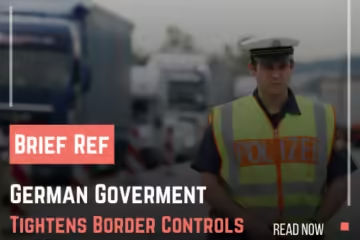- What You Really Need to Know
- What Is the London Underground Strike About?
- When Are the London Underground Strikes Happening?
- Why Are the Strikes Happening?
- Where Will the Strikes Take Place?
- What’s Next for London Underground and Its Workers?
- Who Is Involved in the London Underground Strike?
- What Are the Impacts of the Strike?
What You Really Need to Know
In November 2024, London commuters are set to face significant disruptions as London Underground workers plan a series of strikes over pay and working conditions. Here’s a breakdown of the strike’s key details, causes, and potential impacts.
What Is the London Underground Strike About?
The strike, led by the Aslef and RMT (Rail, Maritime, and Transport) unions, is rooted in a dispute over pay and working conditions. The unions have rejected multiple pay offers from Transport for London (TfL), including the latest proposal of a 3.8% raise and a lump-sum payment. The core issues center around dissatisfaction with pay disparities, refusal to negotiate reduced working hours, and concerns over collective bargaining rights for staff.
When Are the London Underground Strikes Happening?
The strikes are scheduled for various days in the first two weeks of November 2024:
- 1st November: Maintenance workers strike.
- 6th to 8th November: Signalling and station staff will walk out.
- 7th and 12th November: Tube drivers and managerial staff, represented by Aslef, will strike.
These strikes will likely cause major disruptions to services, with limited or no operations on certain days.
Why Are the Strikes Happening?
According to Aslef, the strike is driven by the management’s unwillingness to engage in meaningful negotiations. Finn Brennan, Aslef’s full-time organizer for the Underground, stated that despite the union’s efforts, London Underground management has refused to discuss key issues like pay raises in line with other TfL services (such as the Elizabeth Line) and the introduction of paid meal breaks. Similarly, the RMT has criticized the pay offers as inadequate and a threat to collective bargaining, with members’ rights being undermined by management decisions on pay increases.
Where Will the Strikes Take Place?
The strikes will affect the entire Underground network. Tube drivers, signalling staff, and maintenance workers across all lines, including major routes like the Victoria, Northern, and Jubilee lines, are expected to participate. Passengers should prepare for delays and potential shutdowns on strike days, with some limited services running on non-strike days.

What’s Next for London Underground and Its Workers?
The unions remain open to further negotiations but insist that a fair, consolidated pay offer must be presented. There have been ongoing talks between TfL and the unions, and TfL has expressed hope that the strikes can be avoided through dialogue. However, until an agreement is reached, the strikes are set to proceed.
Who Is Involved in the London Underground Strike?
Key players in this dispute include:
- Aslef Union: Representing over 2,000 tube drivers, instructors, and managerial staff.
- RMT Union: Representing signalling staff, station workers, and maintenance employees (roughly 10,000 members).
- Transport for London (TfL): The body responsible for operating the London Underground, in charge of negotiating with the unions.
What Are the Impacts of the Strike?
The strike is expected to have wide-reaching consequences:
- For commuters: Severe disruptions across the Underground network, forcing many to seek alternative transport options.
- For London businesses: Significant impacts on hospitality, tourism, and retail sectors. Kate Nicholls, CEO of UK Hospitality, emphasized that the strike will hit two key trading days, affecting workers, customers, and the broader economy.
- For TfL: Potential financial strain due to reduced services and lower revenue, as well as increased pressure to resolve the dispute.




